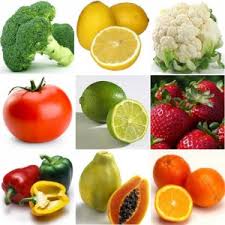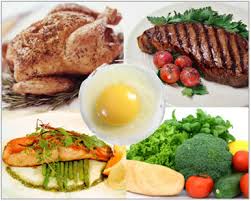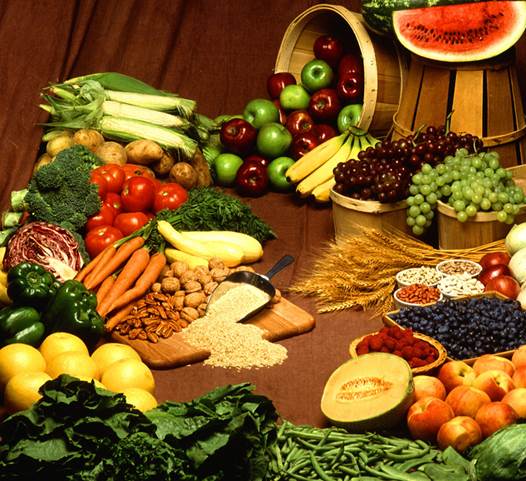If you've recently had a C-section, or are planning for one, you're probably wondering how to take care of yourself after cesarean delivery. A healthy diet is critical for speeding the healing process and providing needed energy. While a regular physical fitness plan may be all you need to ensure your own health, a nutritious diet after C section will also benefit your newborn by providing all the necessary nutrients to your precious baby.
What to Eat After Cesarean Delivery
1. Fluid, Loads of It
 You need to drink fluids, whether you're thirsty or not. This is especially important if you've decided to breastfeed your newborn. Moreover, constipation is a frequent issue in the first few weeks for most new mothers, drinking liquids can help ensure your bowel movements are smooth and regular. You don't want to risk weakness from dehydration. And while fruit juice and water are best, you can also have lemonade, coconut milk, or any other refreshing drink.
You need to drink fluids, whether you're thirsty or not. This is especially important if you've decided to breastfeed your newborn. Moreover, constipation is a frequent issue in the first few weeks for most new mothers, drinking liquids can help ensure your bowel movements are smooth and regular. You don't want to risk weakness from dehydration. And while fruit juice and water are best, you can also have lemonade, coconut milk, or any other refreshing drink.
2. Foods Rich in Vitamin C
 Postnatal cesarean and breastfeeding mothers are advised to obtain their nutritional needs from food, instead of supplements. So it's important to consume as many fresh foods rich in vitamin C and iron as possible. Not only does vitamin C help with the healing of scar tissue, it also fights off infection, and helps repair any postnatal damage to blood vessels and cartilage. Vitamin C also enhances iron absorption, a critical nutrient if you had a significant loss of blood resulting from cesarean section.
Postnatal cesarean and breastfeeding mothers are advised to obtain their nutritional needs from food, instead of supplements. So it's important to consume as many fresh foods rich in vitamin C and iron as possible. Not only does vitamin C help with the healing of scar tissue, it also fights off infection, and helps repair any postnatal damage to blood vessels and cartilage. Vitamin C also enhances iron absorption, a critical nutrient if you had a significant loss of blood resulting from cesarean section.
3. Iron Rich Foods
After a caesarean section, you typically might feel tired, weak, and have a poor appetite. The blood loss has likely depleted the iron your body needs to stay healthy. Having an iron-rich diet helps the body produce hemoglobin and prevents anemia. Eating foods high in iron, such as meat, fish and poultry, along with iron found in vegetables, assists your body in forming new red blood cells.
4. Lean Protein
 Knowing what to eat after cesarean delivery is critical. Think lean protein in order to aid in the healing process, and well-balanced meals containing lean proteins should comprise most of your meals. It acts as a building block for your body, and helps repair and rebuild tissues, skin, cartilage, muscles, and blood vessels. Lean protein is heart-healthy because it helps to regulate your blood pressure, and cholesterol levels.
Knowing what to eat after cesarean delivery is critical. Think lean protein in order to aid in the healing process, and well-balanced meals containing lean proteins should comprise most of your meals. It acts as a building block for your body, and helps repair and rebuild tissues, skin, cartilage, muscles, and blood vessels. Lean protein is heart-healthy because it helps to regulate your blood pressure, and cholesterol levels.
5. Fiber
 Many women have painful constipation and bloating after a cesarean delivery. This is due in part to the pain medication they take that slow down digestion, and may result in stress on the surgical stitches in the womb. High fiber fruits, such as banana, oranges, raspberries and strawberries, and fruits with edible skins, like apples, peaches and pears can be of help. Also include whole grain breads and pasta, beans and lentils, along with fiber rich vegetables, such as artichoke, peas, and broccoli in your diet to relieve the discomfort.
Many women have painful constipation and bloating after a cesarean delivery. This is due in part to the pain medication they take that slow down digestion, and may result in stress on the surgical stitches in the womb. High fiber fruits, such as banana, oranges, raspberries and strawberries, and fruits with edible skins, like apples, peaches and pears can be of help. Also include whole grain breads and pasta, beans and lentils, along with fiber rich vegetables, such as artichoke, peas, and broccoli in your diet to relieve the discomfort.
6. Specific Food Choices



What to eat after cesarean delivery also includes specific food choices, such as:
- Egg: It's an important food source because eggs contain high-quality proteins, vitamins, minerals, and good-fats that can speed up your recovery.
- Fish: It's a low-fat, high-protein food source providing a wide range of health benefits. Oily fish are high in omega-3 fatty acids, and white-fleshy fish is lower in fat than any other source of animal protein.
- Milk: If you are breastfeeding, the process of producing breast milk demands calcium from your body. Milk is rich in calcium, and the calcium in milk is easily absorbed and used in the body.



- Yogurt: Eating yogurt is a great way to consume the healthy bacteria that are effective in regulating the digestive system and decreasing gas, diarrhea, constipation and bloating. It's also an excellent option for supplying needed calcium and zinc for your body.
- Walnuts: They're an excellent source of anti-inflammatory omega-3 fatty acids, and are rich in antioxidants. They offer many health benefits, including copper, folic acid, phosphorus, vitamin B6, manganese and zinc.
- Lemon: Consume lemons because it's a rich source of vitamin C, helps boost your immunity, and paring lemon with iron rich food will assist your body's absorption of iron.
Taking Care of Yourself After Cesarean Delivery
The days following the delivery of your baby can be one of the most challenging times for mothers. Besides what to eat after cesarean delivery, caring for yourself is equally important and this can be even more challenging. When in recovery, remember to:
- Take it easy and allow yourself time to heal.
- Get enough sleep so you are well rested.
- When you've rested, try walking daily, while increasing the walking distance from the previous day.
- Avoid lifting anything heavier than your infant until your doctor tells you otherwise.
- Avoid straining yourself in rigorous exercise, such as bicycling, jogging, or aerobics for at least six weeks.
- Avoid doing sit-ups and exercises that will strain your abdomen for at least six weeks.
- You can still shower normally, but pat the incision dry when you're are finished.
- Cover the incision with a pillow when coughing or taking deep breaths. The support will help ease the pain.
- Use sanitary pads to control vaginal bleeding, and don't use tampons or douche until your doctor approves.
- Consult with your doctor as to when you can resume driving and intercourse.
Incision Care
- If the incision has surgical tape, leave it on for a week, or until it falls off.
- Cleanse daily with warm, soapy water, pat dry, and change the bandage.
- Cover the incision with a new bandage if it's weeping or rubbing against clothing.
When to See a Doctor
Feeling soreness at the incision is normal, and you may have discharge or bleeding for up to six weeks. However, consult with your doctor if you experience the following conditions:
- Excessive pain
- A fever (>100.4 degrees Fahrenheit)
- Foul-smelling discharge from the vagina
- Heavy bleeding from the vagina
- Swelling or redness in your leg
- Trouble breathing
- Chest pains
- Painful breasts
